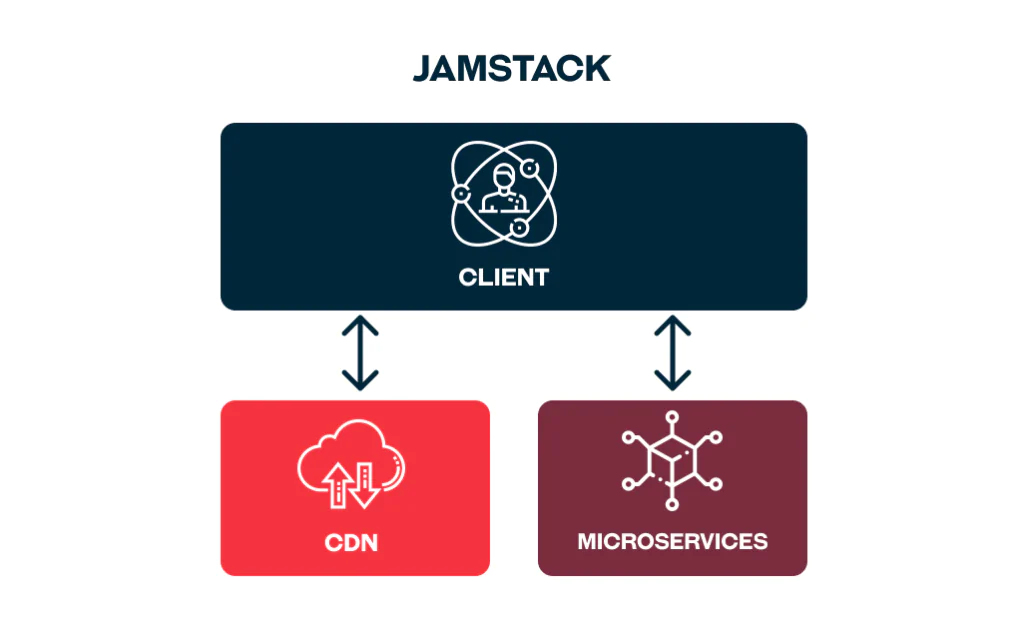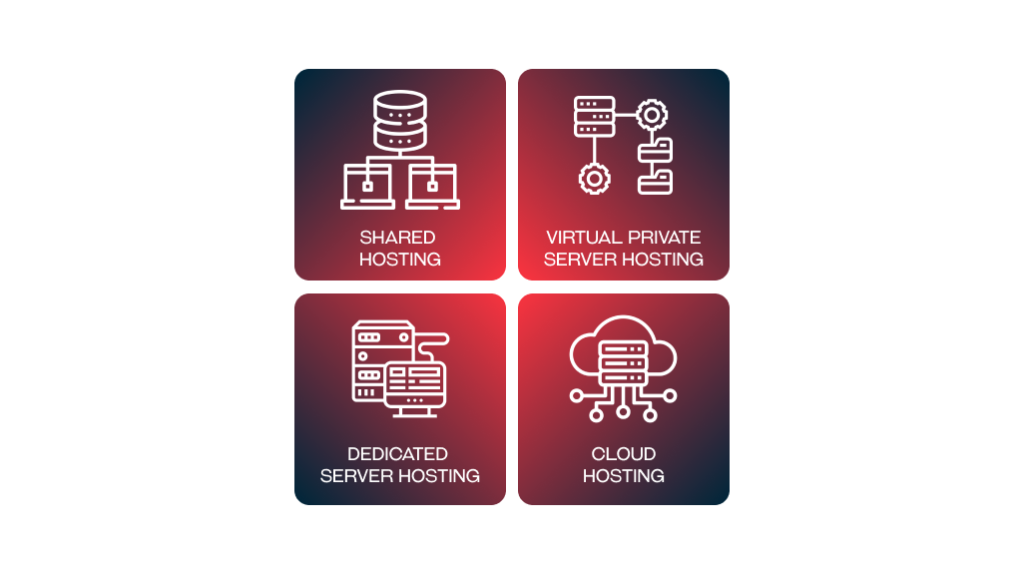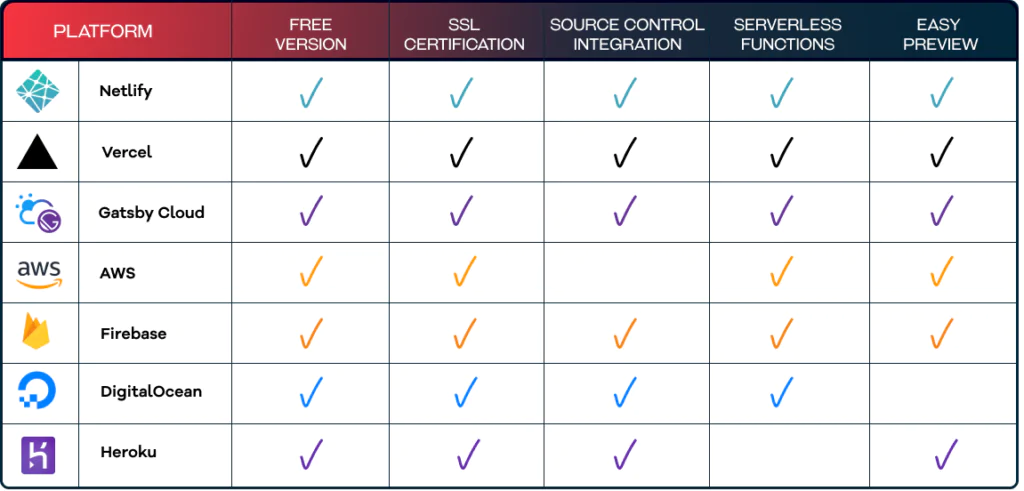
Introduction
Reaching back to static sites was a little surprising, especially when dynamic websites (that generate different types of content every time a user views it) seem to be more suitable for the modern, fast-paced world we live in.
But looking closer to the possibilities static sites bring to the user dispel the doubts of using them. Especially if we look at Jamstack, the most popular static website approach, built with HTML, Javascript and CSS.

Jamstack architecture enables us to create outstanding, fast and SEO friendly websites that are super secure and easy to maintain.
While the Jamstack approach became more and more popular, technologies that support it grew, and now there are so many options to build and run Jamstack sites that it may be overwhelming to choose any.
Fortunate for you, we have all the knowledge and experience to guide you through the process of building the Jamstack project.
If you want to start from the beginning and read more about the Jamstack, the general approach of moving from dynamic server-side apps to client-side stacks, check out the article “What is Jamstack”
And if you know what Jamstack is, but you’re still not sure if it’s the right option for you, check out the video below.

Today we will focus on choosing the right hosting for your Jamstack project. We will go through those most popular ones to show you all the possibilities you’ve got.
If you need advice on choosing the CMS or frameworks, check out our other articles.
What is hosting?
Web hosting is an online service that lets you store online content and makes it accessible for users. It’s a little bit like your own warehouse for all the website’s elements and data, rented on a physical server.
There are many hosting services prepared accordingly to Jamstack architecture requirements, based on the concept of serverless architecture. They lean on third-party cloud-hosted services.
Types of hosting
Among all, there are four main types of hosting:

Shared hosting
The best option for entry-level website hosting, which won’t receive a great amount of traffic. A website is stored with multiple other sites, and share the same server resources, such as RAM and CPU. It is the cheapest option of all, but as you share the server, it can affect your UX.
Virtual private server hosting
It’s an optimal option if a site owner wants more control over the hosting, but doesn’t need a dedicated server yet. Here, every website is hosted within its own space on the server. The whole server can host other websites as well, but only you have access to your space.
Dedicated server hosting
The best choice for websites that get a high level of traffic. In this option, you have the whole server dedicated to only one site and the owner is in control of everything, from security to the operating system.
Together with the wider options available, greater technical knowledge is required to run the ongoing management. The cost of hosting is much higher than within other options.
Cloud hosting
The most scalable option available, meaning the site can grow over time. This solution works via the network. The content is distributed across several cloud servers. Cloud hosting brings many benefits, like:
- High availability – even if one server is faulty, the rest cover for it and keep your project running smoothly
- Cost-effectiveness – you pay only for the services you are actually using
- Faster and high performing website – cloud server increases your site capacity and allows for the highest performance
- Higher security – cloud hosting services provide secure and encrypted solutions, backup recovery, firewalls and data isolation, so your data and resources are safe
Still not sure which platform to choose?
What to consider while choosing a hosting platform
The market is fulfilled with hosting providers, so choosing the right one can be a tough call. Below you can find a list of things to consider while looking at available offers:
Choosing the hosting option with a refundee guaranteed
Building and hosting a website is a challenging task, that requires many decisions. Having a chance to change your mind, whether it will be choosing another plan or another provider is a wise alternative.
Plan with a refundee lets you run the test, ensuring that you pay for what you need.
Buying based solely on price
Choosing the cheapest option can be a good idea, but only when you are sure it meets all your expectations. Otherwise, you should consider spending more and be sure that your website won’t lose performance or visitors.
You can always start with free plans, that are available on different platforms. Just remember, that they have limitations, that can influence your website, so check them thoroughly.
Not knowing the platform limitation
Every business is built to grow and probably yours is no different. And you don’t want to find out one day, that it’s the hosting that’s blocking you from growing.
The scalability of the chosen option is a guarantee to keep your website performing well, no matter how much it will change.
Level of customer support
Engagement and availability of customer support are other things to consider. Problems with website performance can have an irreversible impact on the number of your website’s visitors. And that’s why it should always work smoothly and fast.
Make sure that the customer service is available 24/7 to help with any technical issues. The support you get from the hosting provider will increase the money and time you have to spend on the project.
Most popular Jamstack hosting platforms
All the Jamstack hosting platforms are cloud-based, mostly because the main feature of Jamstack sites is a high speed and high performance, and cloud-based services provide all this and much more.
The most popular Jamstack hosting platforms are:
- Netlify
- Vercel
- Gatsby Cloud
- AWS
- Firebase
- Heroku
- Digital Ocean
We will get to each one of them a bit deeper later in the article, but first, here’s a quick head-to-head comparison between all of them to get a bit more context:

As you can see above, all the Jamstack hosting platforms provide similar features – after all, they are storage places. But they differ in the amount of storage capacity, the technical knowledge required, server speed, reliability and degree of control you have.
There are two main players in the field of serverless platforms: Netlify and Vercel, and so we will start our listing with them. They both provide the ultimate workflow for developing, previewing, and shipping Jamstack websites.

Netlify
The co-founder of Netlify, Matthias Billman, brought the term Jamstack to life, so he has all the resources to create an outstanding hosting platform for Jamstack websites. And so he did.
Netlify is a super-easy, scalable and secure way to host your website. In time, it grew to become a complex ecosystem for building high-performance websites and web applications.
Netlify creates its own kind of repository that connects to your GitHub repository. This allows it to pull the source code and pre-render a static website. Then it selects the best CDN to distribute content. As a result, it provides a fast-loaded website, that visitor gets from the nearest server.
Benefits of Netlify hosting
- Free version available – free plan cover loads of the features
- Branch deployments – Netlify makes it possible to choose any branch from the Git project; it makes testing much easier
- Fast edge servers – extremely reliable and secure servers make the website even 10x more performant
- Password protection – Netlify allows you to hide parts of the whole website to visitors who don’t have a password
- Free and easy to configure SSL certificate – Netlify offers free SSL certificates for all websites, which increase the security of the website and optimize it for SEO
- Built-in DNS management solution – this option makes the launching of the project super easy
- Reliability – after every deployment, apps are served across the globe to multiple cloud providers.
- Easy content management – Netlify enables all the member of content team to create the content and push the updates to the CDN from any location

Vercel
It is a cloud platform for static sites and frontend frameworks with serverless functions, built to integrate with headless CMS.
Vercel works well with most of the frameworks, but as the Vercel founder, Guillermo Rauch, is the creator of Next.js, it’s optimized best for it. Working in Vercel with Next.js makes it possible to create any front-end app with zero configuration and scale it dynamically to millions of pages.
Benefits of Vercel hosting
- Serverless function – handling the functions or API without hosting on any server
- Automated testing – automated tests make the process more effective by detecting bugs early in the process
- Easy analysis – Vercel allows you to analyze the website without leaving the dashboard
- Vercel covers Next.js features without any additional configuration
- Intuitive dashboard – Vercel makes it easy to manage and navigate through the product
- Integrations – it’s possible to integrate the Vercel with any external tool you need
- Edge Functions – allows gaining benefits of junction the static and dynamic approach. Vercel deploys sites globally on Edge Network and then deliver them to the visitors fast and with personalisation

Gatbsy Cloud
Gatsy Cloud is a cloud platform dedicated to Gatsby websites and apps. Hosting was the last piece in a complete solution to build the Jamstack website that Gatsby pretended to be.
Gatsby Cloud released Gatsby Cloud in 2021, so it’s a relatively new solution, but it is probably the best way to host Gatsby projects.
Benefits of Gatbsy Cloud hosting
- Fast load times – combining Gatsby Cloud with Fastly (globally-distributed network) allows visitors to load content in milliseconds
- Flexible plans – it offers a wide range of different plans, which are the answer for various needs of the customers. What’s more, smaller projects can easily operate with the free plan.
- Simply deployment – going from code to production is possible in just a few clicks, thanks to intelligent optimization on the edge network
- Global points of presence – by using Fastly’s globally placed POPs, Gatsby improves content delivery speed and user experience
- High security – free, automatically generated TLS certificates

AWS
Amazon Web Services are an experienced player, as they provide hosting options since 2006. They provide different options for different types of websites and dedicate AWS Amplify Hosting to static sites.
AWS Amplify Hosting offers a high website performance, as it connects the static website benefits with dynamic functionality.
Benefits of AWS hosting
- Broad Support – AWS support all the popular CMS platforms
- Worldwide datacenters – AWS makes it possible to have a datacenter or CDN hosting wherever it’s needed, all around the world
- High scalability – AWS structure can grow accordingly to the user’s needs
- Fast deployment – continuous deployment of static web or server-side rendered app

Firebase
Firebase is yet another puzzle piece in Google machinery. It is a complex tool that lets you build and deploy web applications.
Hosting of single-page web apps, mobile apps landing pages and progressive web apps with Firebase is safe and fast, thanks to deploying files cached on SSAs at CDN edge servers around the world.
Benefits of Firebase hosting
- Free SSL certificates – automatic SSL configuration for each site
- One-click deployment – app distribution from a local directory to the web takes only one command
- Intuitive console – easy access to the deployment history and quick roll back to previous versions
- Easy resources sharing – single Firebase project can contain multiple sites, which makes sharing resources quick and easy
- Fast content delivery – all the content is cached on SSAs at CDN edges around the world, compressed with auto-selected methods

DigitalOcean
DigitalOcean is another PaaS (Platform as a Service) that provides a wide range of tools for developers. It is full of technicalities, so it’s mostly used by developers and experienced users.
Although DigitalOcean is on the market since 2011, they released a dedicated solution for static sites and web apps in 2020. Since then it provides scalable cloud-based web hosting.
Benefits of DigitalOcean
- High accessibility – 14 globally distributed data centres around the world makes the websites accessible and available in any location
- Different hosting options – you decide on how much control of the infrastructure you want to have
- Quick start – starting the hosting is quick and easy and take only a few minutes
- High scalability of the product – with Droplets you can adjust all the options you need, like the amount of memory, the number of virtual DPUs, SSD disk size and transfer limits
- Reach starter plan – with their free plan you can build and deploy up to 3 static sites

Heroku
Heroku was founded in 2007, which makes it one of the first PaaS on the market. Since 2010 it is a part of the Salesforce platform. This enables the users to store the customer data in Salesforce for full-cycle CRM.
Heroku is a cloud computing service that gives backend developers the chance to build and host their applications.
Heroku is not dedicated to Jamstack sites and doesn’t have its own CDN. Hosting is possible by integrating third-party networks, but it makes the process more expensive and time-consuming.
Benefits of Heroku
- Free to start – easy start with basic functionalities suited for small development projects
- Intuitive dashboard – Heroku is known as an easy to use platform
- Security – wide set of security features makes it a safe way to develop new products
- Wide range of plugins – over 200 add-ons available
WRAP UP
As you can see, there are many options to host your Jamstack website. We usually choose Netlify and Vercel, as we think they’re the most flexible and suitable for projects we work on.
But to be honest, many businesses make this decision simply by expanding the services they choose for web development.
Still not sure which platform to choose?
Read More
Why marketers should use Jamstack as a headless CMS?
A step-by-step Jamstack delivery process


